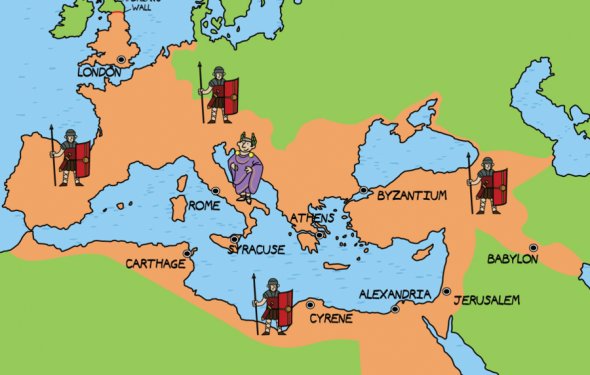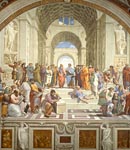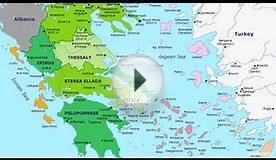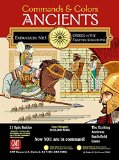Map of Rome and Greece

 Italy was certainly influenced by many powerful cultures and political forces over time, including the Byzantines, Etruscans and Greeks, but it was the world-changing impact of both the Roman civilization and the Italian Renaissance that contributed most-significantly to its status in the modern world.
Italy was certainly influenced by many powerful cultures and political forces over time, including the Byzantines, Etruscans and Greeks, but it was the world-changing impact of both the Roman civilization and the Italian Renaissance that contributed most-significantly to its status in the modern world.
The Roman Republic originated in 510 BC and many powerful Emperors would rule its territories. It was during the life of Julius Caesar (100 BC-44 BC) that the Roman Empire began its total domination of the Mediterranean area and parts of central Europe. Its powerful legions swept across the lands and seas and no one could match the strength of its armies.
The pages of history are replete with seemingly invincible cultures that eventually faded away, and the Roman Empire was no different. It began to crumble around 300 AD, but Rome's influence on architecture, art, government, language, law and religion is a continuing legacy clearly felt and seen in modern Italy, and for that matter, around the western world.
 Centuries of invasions and assorted wars continued here throughout the Middle Ages; small cities emerged; regional powers developed, and Genoa and Venice created vast commercial empires.
Centuries of invasions and assorted wars continued here throughout the Middle Ages; small cities emerged; regional powers developed, and Genoa and Venice created vast commercial empires.
The Italian Renaissance began in Florence in the 13th century and continued on into the 15th century. Funded mostly by the Medicis, a family of bankers, the by-products of that cultural movement created new techniques in architectural design, art, poetry and printing, and the Italian Renaissance is widely referred to in history as the beginning of the Modern Age.
From the mid-15th century to the beginning of the 19th century, the Spanish and French fought for control of Italy. After the total defeat of Napoleon in 1815, Italian patriots emerged from the shadows, and following many decades of struggle and war, Italy was finally unified. It became a nation-state in 1861 when the regional states of the peninsula, along with Sardinia and Sicily, were united under King Victor Emmanuel II.
World War I (1870-1915) industrialized Italy (especially in the north), but in the central and southern regions, overpopulation and high unemployment forced millions of native Italians to migrate to foreign lands.
An era of parliamentary government came to a close in the early 1920s when Benito Mussolini established a Fascist dictatorship. His disastrous alliance with Nazi Germany led to Italy's defeat in World War II.
A democratic republic replaced the monarchy in 1946 and economic revival followed. Italy was a charter member of NATO, the European Economic Community (EEC) and stood at the forefront in development of the European Union (EU).



|
Commands & Colors: Greece vs The Eastern Kingdoms Toy (GMT Games)
|